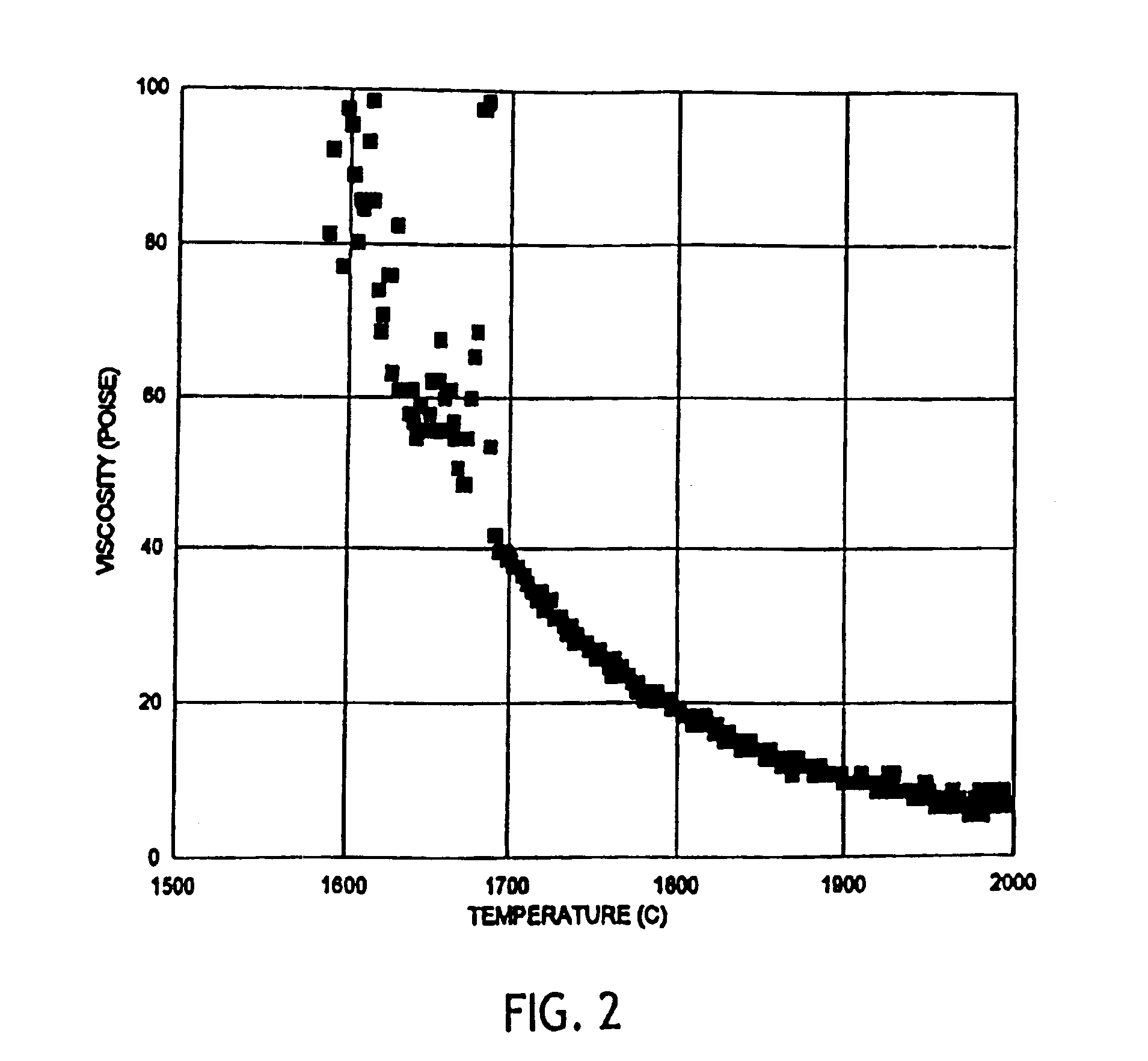High temperature a resistant vitreous inorganic fiber
a vitreous inorganic fiber, high temperature technology, applied in the direction of inorganic material artificial filaments, transportation and packaging, yarn, etc., can solve the problems of severe degradation and/or erosion of furnace components, low use temperature limit, and insufficient use temperature limit of these materials, etc., to achieve easy manufacturing, good mechanical strength, and low shrinkage
- Summary
- Abstract
- Description
- Claims
- Application Information
AI Technical Summary
Benefits of technology
Problems solved by technology
Method used
Image
Examples
example 1
[0069]Composition 1 is a fiber blown from a melt comprising about 72.57 weight percent SiO2, about 22.4 weight percent CaO, and about 3.21 weight percent MgO. The diameter of the blown fiber was 1.56 μm.
example 2
[0070]Composition 2 is a fiber blown from a melt comprising about 72.64 weight percent SiO2, about 22.23 weight percent CaO, and about 3.18 weight percent MgO. The diameter of the blown fiber was 1.27 μm.
example 3
[0071]Comparative Composition 3 was a commercial magnesia silicate fiber spun from a melt comprising 76.46 weight percent silica and 20.87 weight percent magnesia having a diameter of 4.5 μm. Comparative composition 3 demonstrated 11% linear shrinkage after being exposed to temperatures of 1330° C. The inventive calcium magnesia silicate fibers approach this desirable performance, with the advantage of being capable of being produced more economically.
PUM
| Property | Measurement | Unit |
|---|---|---|
| temperature | aaaaa | aaaaa |
| weight percent | aaaaa | aaaaa |
| weight percent | aaaaa | aaaaa |
Abstract
Description
Claims
Application Information
 Login to View More
Login to View More - R&D
- Intellectual Property
- Life Sciences
- Materials
- Tech Scout
- Unparalleled Data Quality
- Higher Quality Content
- 60% Fewer Hallucinations
Browse by: Latest US Patents, China's latest patents, Technical Efficacy Thesaurus, Application Domain, Technology Topic, Popular Technical Reports.
© 2025 PatSnap. All rights reserved.Legal|Privacy policy|Modern Slavery Act Transparency Statement|Sitemap|About US| Contact US: help@patsnap.com



